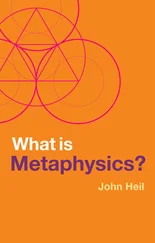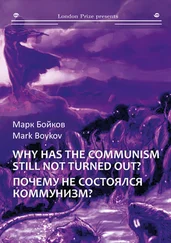There is no easy fix for the great shortage of desirable mates. In the undemocratic world of mating, every success inevitably comes as a loss to vying rivals. Every human who conceives can be deceived. Mate poachers will always be ready to pounce. The pleasures of sexual temptation come in the here-and-now; the costs of infidelity lie in the distant and uncertain future. But perhaps a keener awareness of mate-value logic will give us the tools to curtail the more sinister products of the mating wars.
BRIAN ENO
Artist; composer; recording producer: U2, Coldplay, Talking Heads, Paul Simon; recording artist
Most of the smart people I know want nothing to do with politics. We avoid it like the plague—like Edge avoids it, in fact. Is this because we feel that politics isn’t where anything significant happens? Or because we’re too taken up with what we’re doing, be it quantum physics or statistical genomics or generative music? Or because we’re too polite to get into arguments with people? Or because we just think that things will work out fine if we let them be—that the Invisible Hand or the technosphere will mysteriously sort them out?
Whatever the reasons for our quiescence, politics is still being done—just not by us. It’s politics that gave us Iraq and Afghanistan and a few hundred thousand casualties. It’s politics that’s bleeding the poorer nations for the debts of their former dictators. It’s politics that allows special interests to run the country. It’s politics that helped the banks wreck the economy. It’s politics that prohibits gay marriage and stem cell research but nurtures Gaza and Guantanamo.
But we don’t do politics. We expect other people to do it for us, and we grumble when they get it wrong. We feel that our responsibility stops at the ballot box, if we even get that far. After that, we’re as laissez-faire as we can get away with.
• What worries me is that while we’re laissez-ing, someone else is faire-ing.
THE BLACK HOLE OF FINANCE
SETH LLOYD
Professor of quantum mechanical engineering, MIT; author, Programming the Universe
In the fall of 2007, investment banks tottered around like blind lame giants, bleeding cash and exotic financial instruments. There followed a huge sucking sound and a queazy combination of explosion and implosion. Some banks survived, some didn’t, and my retirement savings halved in value. There wasn’t much to do about the money, but there was something I could do to comfort myself, and that was to construct a scientific theory of what was happening. When in worry and doubt, work it out, preferably with some fancy equations.
At the level of metaphor, the financial implosion of an investment bank resembles the formation of a supermassive black hole in the early universe. A giant star, a million times the mass of our sun, burns through its nuclear fuel in a few tens of thousands of years. After it has consumed its nuclear fuel, it can no longer generate the heat and pressure required to fend off the force of gravity. Unable to support its own weight, the star collapses. As it implodes, it blows off its outer layer in an explosion moving at the speed of light.
In contemplating the financial wreckage, I realized that the similarity between financial collapse and gravitational collapse is not merely a metaphor. In fact, it is possible to construct a mathematical theory that applies equally to gravitational collapse and financial collapse. The key ingredient is the existence of negative energy: In both Newton’s and Einstein’s theory of gravity, the energy in matter is positive but the energy in gravity is negative. In the universe as a whole, the positive energy of mass and kinetic energy is exactly counterbalanced by the negative energy of the gravitational field, so that the net energy of the universe is effectively zero.
The analog of energy in financial systems is money. Households, companies, governments, and of course investment banks have assets (positive money) and debts (negative money). When the companies in which I own stock send me their annual reports, I note with fascination that their assets and net obligations sum—magically—to zero. (This magical accounting might have something to do with the collapse of my retirement fund.) So let’s look at theories of systems that have positive stuff and negative stuff where the total amount of stuff sums to zero.
Start with gravity. Stars, galaxies, or the universe itself, which possess both positive and negative energy, behave differently from things like cups of coffee, whose energy is entirely positive (ignoring the gravitational and psychological effects of caffeine). In particular, gravitational systems exhibit a weird effect that goes under the name of “negative specific heat.” The specific heat of a cup of coffee measures how the temperature of the coffee goes down as it loses energy by radiating heat to its surroundings. As the cup radiates energy, it cools down. Bizarrely, as a star, galaxy, or cloud of interstellar dust radiates energy, it heats up: The more energy a star loses, the hotter it gets. The star has negative specific heat.
If a cup of coffee had negative specific heat, when you put it down on the counter and forgot about it for a few minutes it wouldn’t cool down, it would get hotter and hotter. The longer you forgot about it, the hotter and hotter it would get, eventually exploding in a fountain of superheated coffee. Conversely, if an ice cube had negative specific heat, the more heat it absorbed, the colder it would get. If you left such an ice cube on the counter, it would absorb heat from its hotter surroundings. As it absorbed heat, it would get colder and colder, sucking more and more heat from its surroundings until it and everything around it was drawn inexorably toward absolute zero.
Negative specific heat doesn’t immediately lead to a catastrophe. In a star, the hydrogen fusing into helium at temperatures of millions of degrees has positive specific heat that counterbalances the negative specific heat of gravitation, leading to a harmonious generation of lots of free energy over billions of years. Life on Earth is a product of this harmony. Once the sun burns through its supply of nuclear fuel, however, gravity will dominate and our star will collapse.
Now turn to financial systems. As in gravitational systems, the mere existence of “negative money,” or debt, need not lead to collapse: Just as in a star, the interplay between generation of assets/positive energy and debt/negative energy can proceed harmoniously and produce lots of goods. But the possibility of implosion always exists. What drives a star or an investment bank over the threshold from stable generation of energy/wealth to runaway explosion and collapse? Here’s where the detailed mathematical model can help.
Around 1900, the physicist Paul Ehrenfest was trying to understand how molecules bounce around in a gas. He constructed a simple model, now called the Ehrenfest urn model. Take two urns and a bunch of balls. Initially all the balls are in one of the urns. Number each of the balls, and then pick a number at random and move the ball labeled with that number to the other urn. What happens? Initially, balls tend to move from the full urn to the empty urn. As the initially empty urn fills up, balls start to move back to the other urn as well. Eventually, each urn has approximately the same number of balls. This final state is called equilibrium. In the Ehrenfest urn model, equilibrium is stable: Once the number of balls in the two urns becomes approximately equal, it stays that way, with small fluctuations due to the random nature of the process.
The mathematical model I constructed is a simple generalization of Ehrenfest’s model. In my model, there are white balls (positive energy/assets) and black balls (negative energy/debt), which can be created or destroyed in pairs. As a result, the number of white balls is always equal to the number of black balls, but the total number of balls is not conserved. In this model, there are two types of processes: Balls are moved at random from urn to urn, as before, and balls can be created or destroyed in pairs within an urn.
Читать дальше












